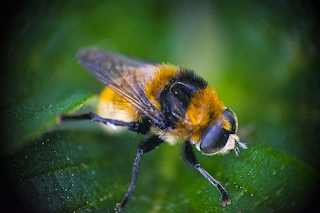509

Previous studies have reported that there is a decline in several species of California bumble bees around the globe due to expansion of wild habitat, climate changes and use of bee-killing pesticides. A recent court ruling could save them if they can be found.
Image Credits: Pixabay
Researchers at the University of California, Riverside (UCR), have proposed a study that suggests there are changes in the populations of bumble bees across the terrestrial areas in California.
Bumble bees are adaptive to cooler temperatures and can fly in lower light levels than other bees. They can perform various types of pollination processes required for plants, including peppers, cranberries and tomatoes. Bumble bees pollinate crops worth $3 billion yearly in the US.
For the new data, Hollis Woodard, a UCR Entomologist and her team members collected bees from 17 sites representing six different ecosystems earlier known to host a variety of bumble bees.
The research team aimed to gather at four places in Southern California but was able to locate only 10 bees in those areas at the time of their visits. They collected 17 types of bees, representing 68 percent of the species known to occupy the state.
“Although we found that relative to other sites, the mountains are home to the most diverse bumble bee populations, even at those sites, we also failed to find some species that used to be there,” said Woodard.
The Western Bumble bee, or Bombus occidentalis, one of the missing species, is the main pollinator of crops and wild plants. This specie was the most common bumble bee species in California.
“We didn’t find it even once,” said Woodard. “If it was okay, we should have seen it”.
Bombus vosnesenskii was the most commonly found species. These yellow-faced bees represented more than half of the bees collected by the team. It is considered the dominant species in California.
“Even the most dominant species has lost a lot of suitable habitat since the last large-scale survey,” said Woodard. “The winner is not doing great.”
The research team sampled only 100 bees in each area where they could find bees so that they do not harm the bumble bee populations. This approach helped them to locate a large number of bees in most of the places.
According to Woodard, the team might have discovered additional bee species in higher diversity places like the White or Sierra Nevada Mountains if they had collected more specimens.
“It’s possible in these places that if we’d taken 200 bees, we’d have continued to capture additional species,” said Woodard.
The Western Bumble bee is one of the four species eliminated by the state’s Third Appellate District Court of Appeal for inclusion on the endangered species list of California.
None of these bumble bee species was found by the new census and is already included in the federal lists. State laws may provide them extra protection.
The U.S. Endangered Species Act forbids listed wildlife from being collected, trapped or taken except for scientific or conservation purposes. State laws can accompany these protections, and address more specified regional concerns.
“Generally, the state list directs more action toward more local measures. It’s good for them to be covered under both,” said Woodard. “I hope the state listing also encourages Californians to feel like they have a stake in helping the bees survive because bees certainly help humans survive.”
The detailed study has been published in Ecology and Evolution.
Follow us on Medium!

